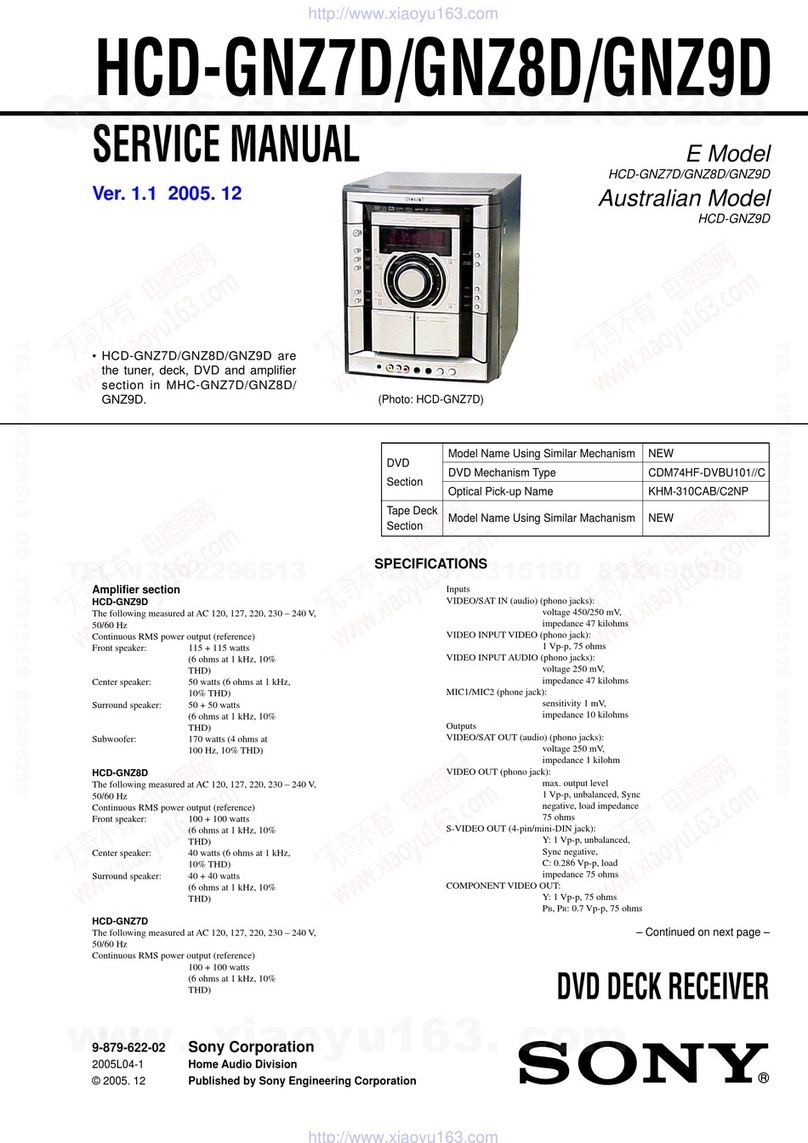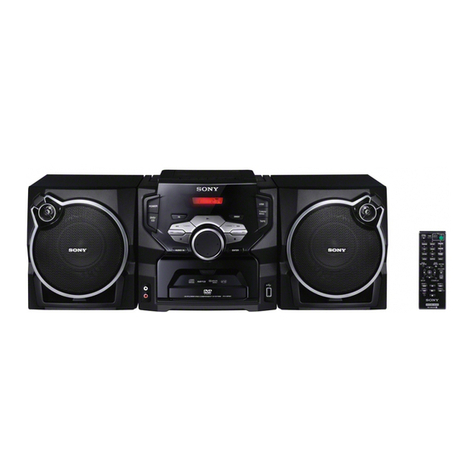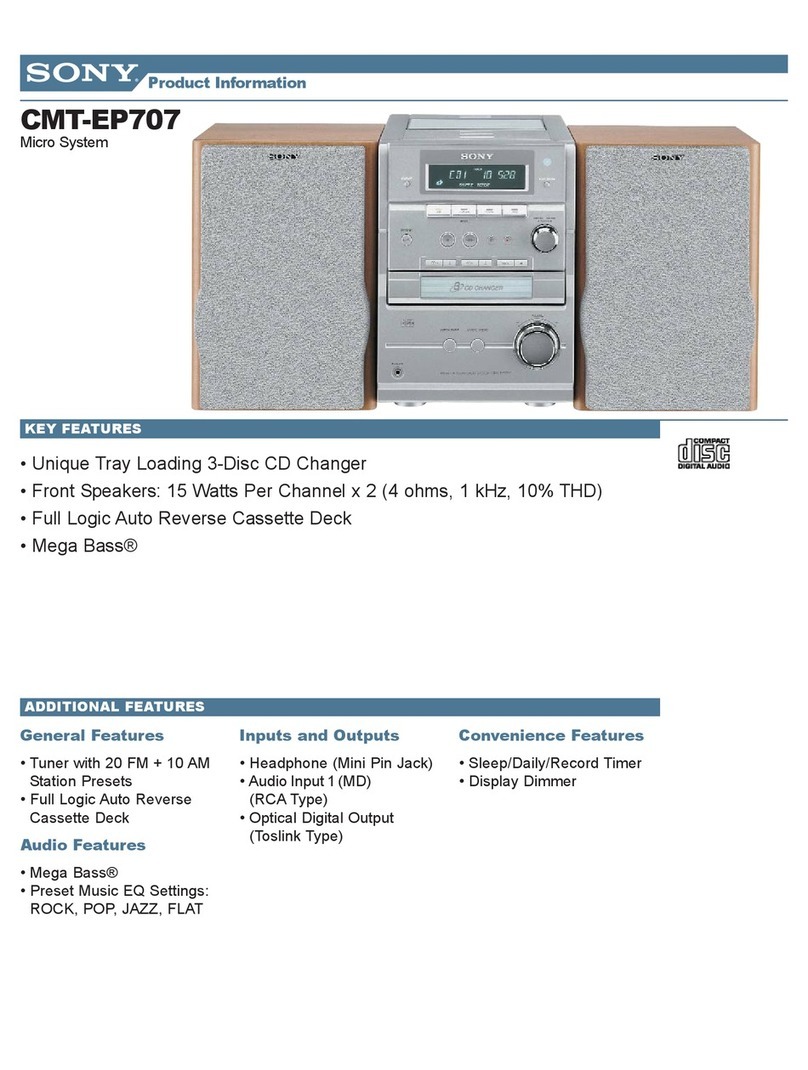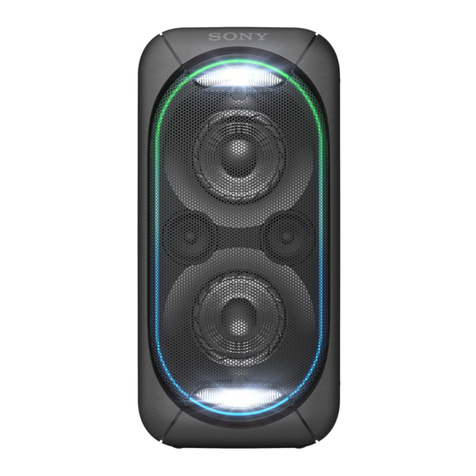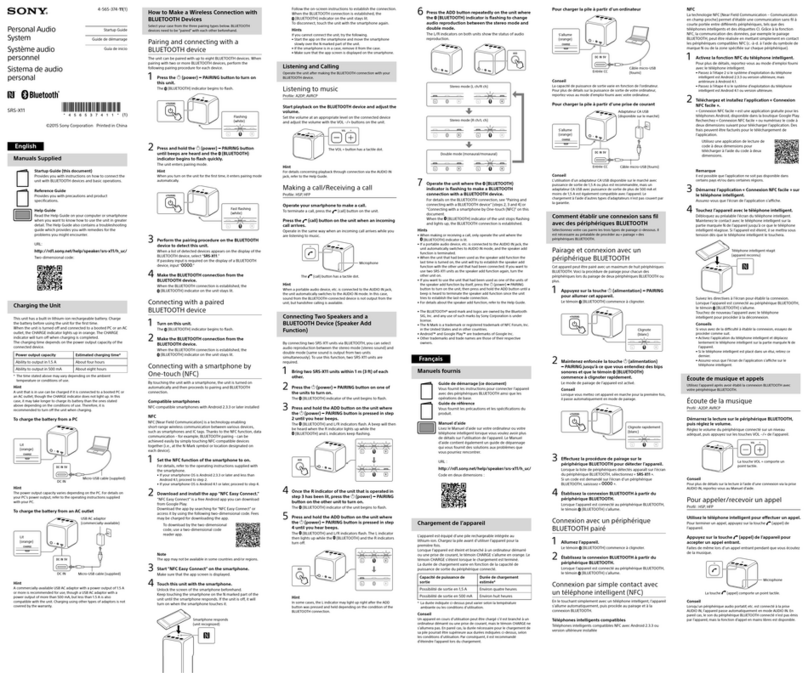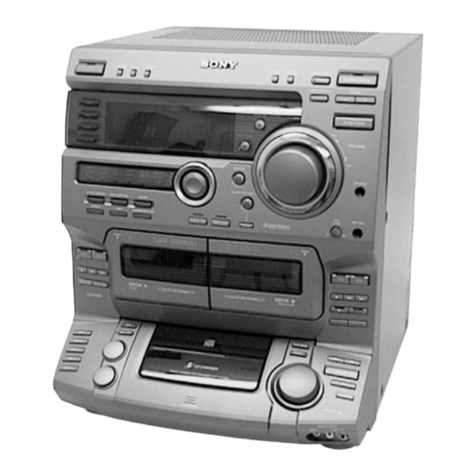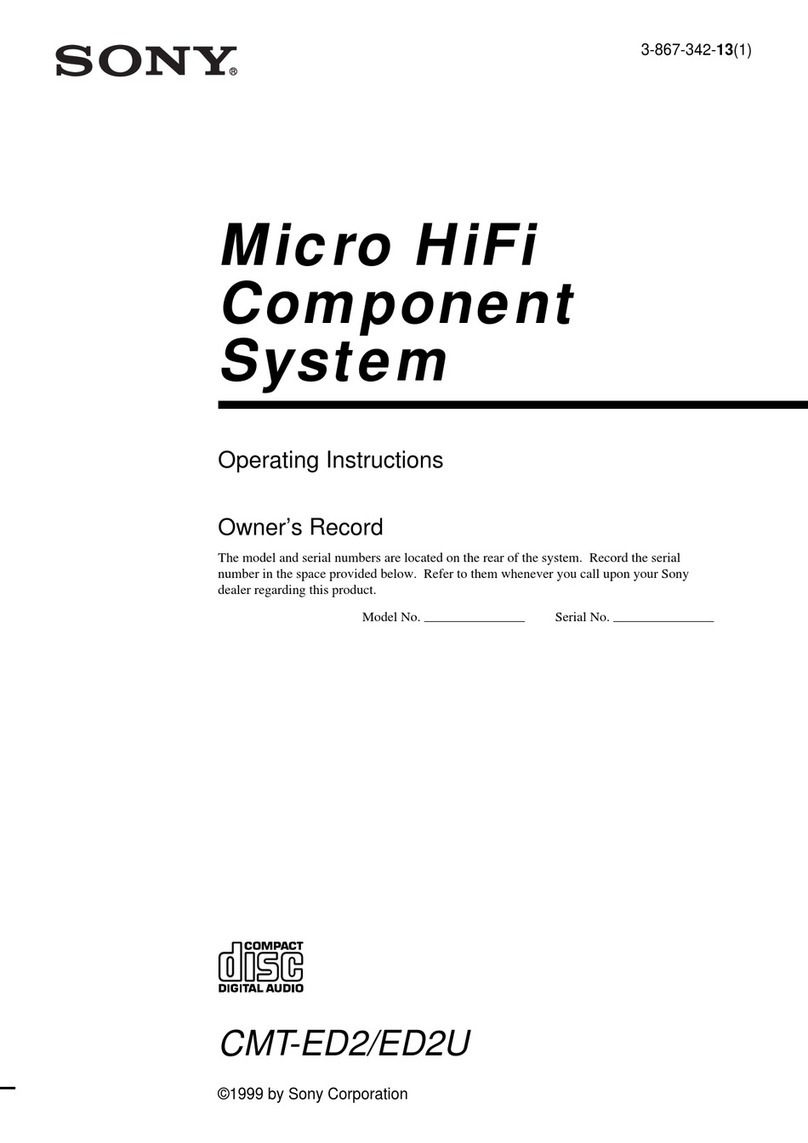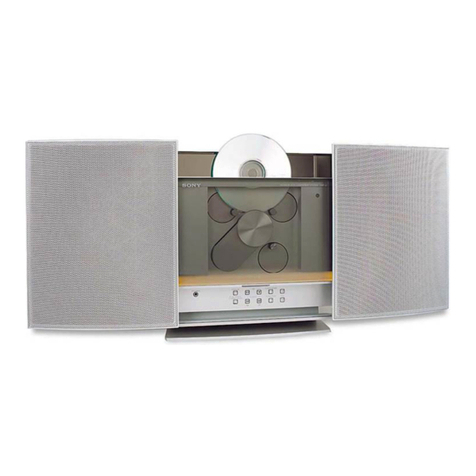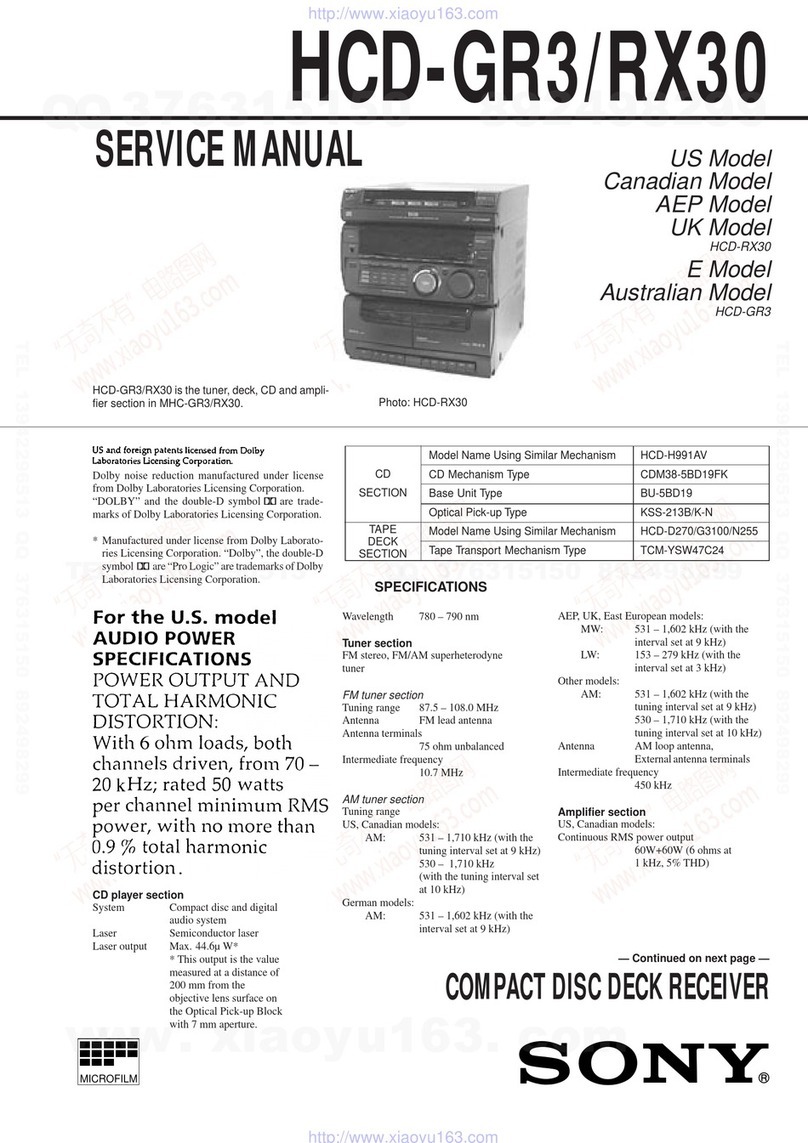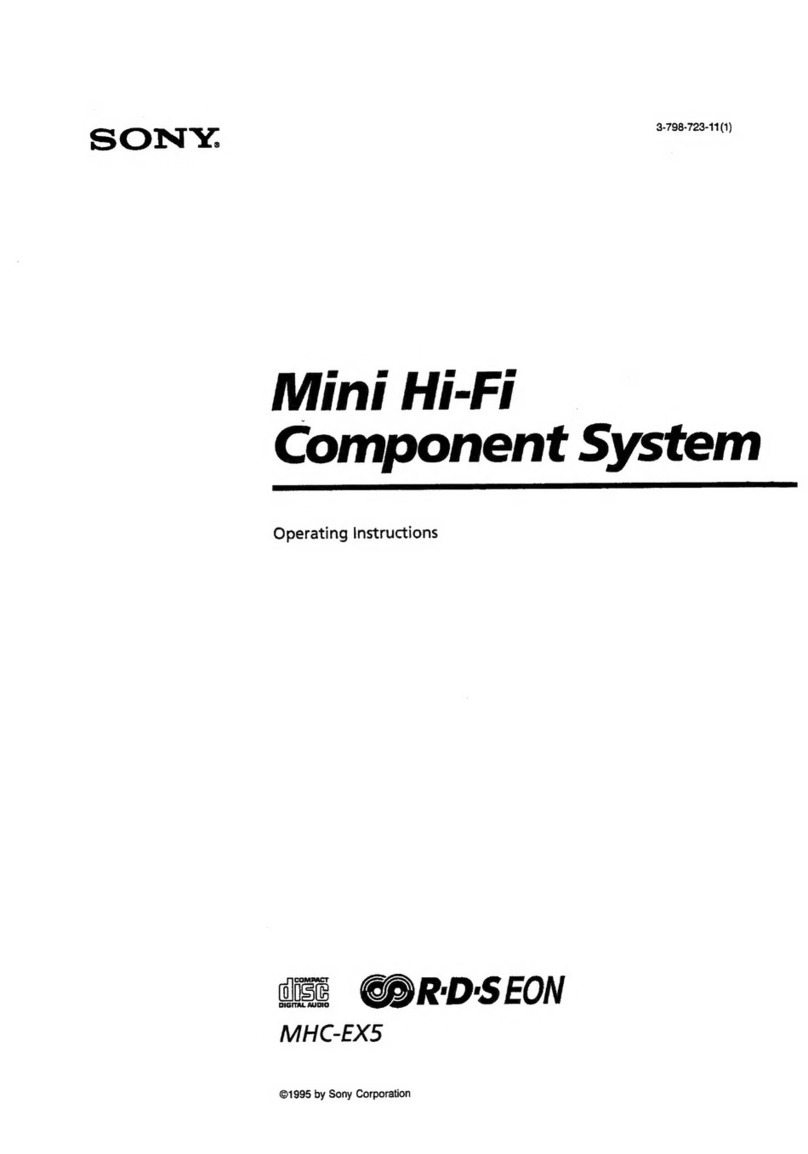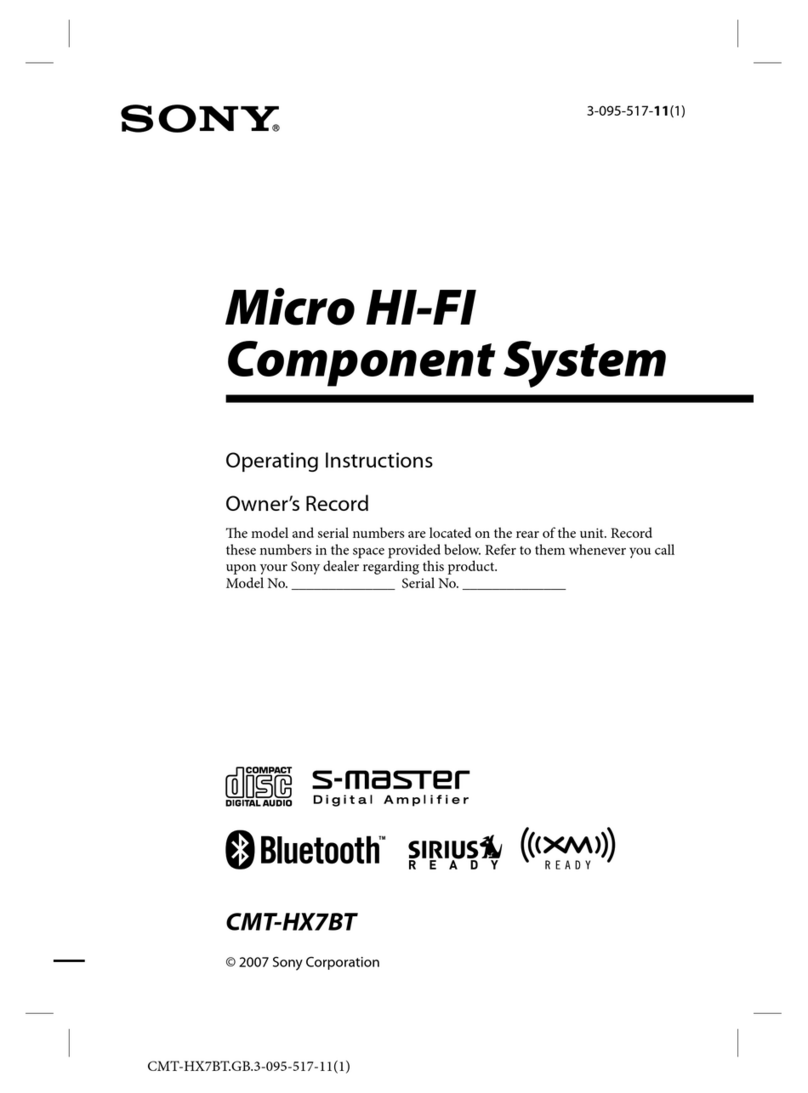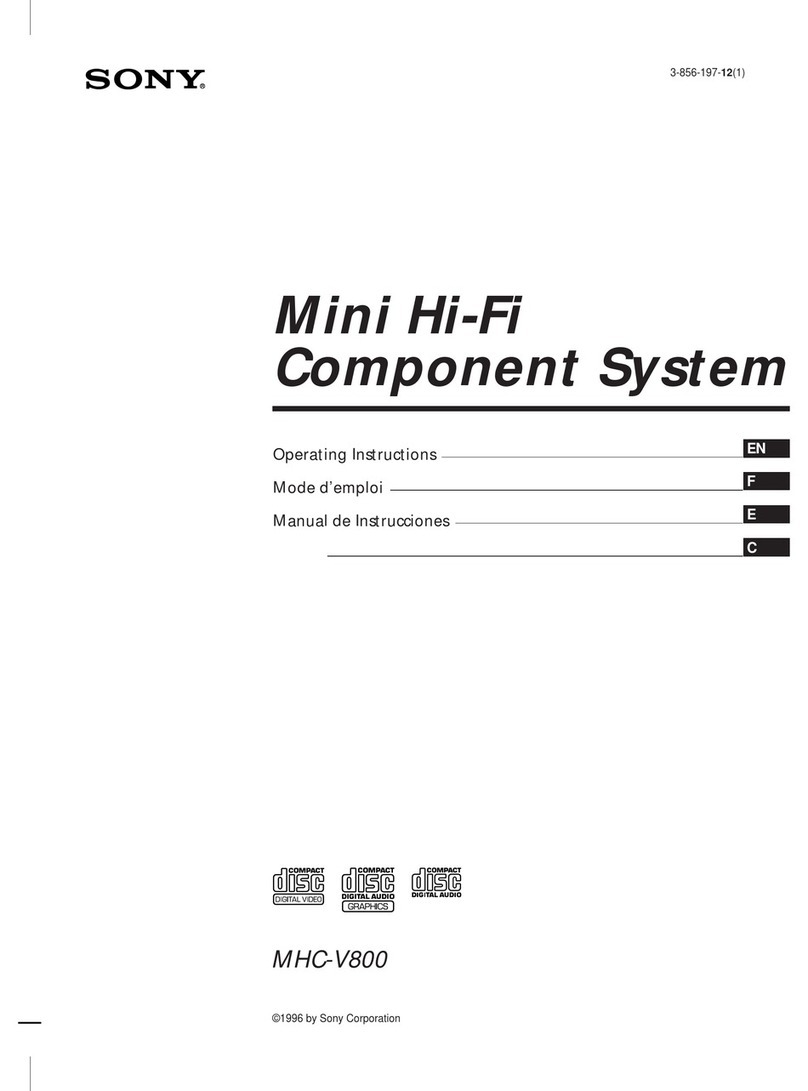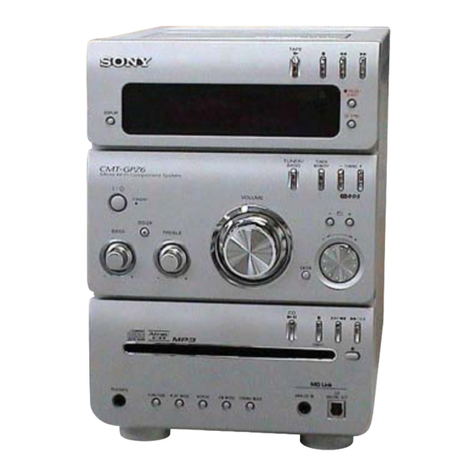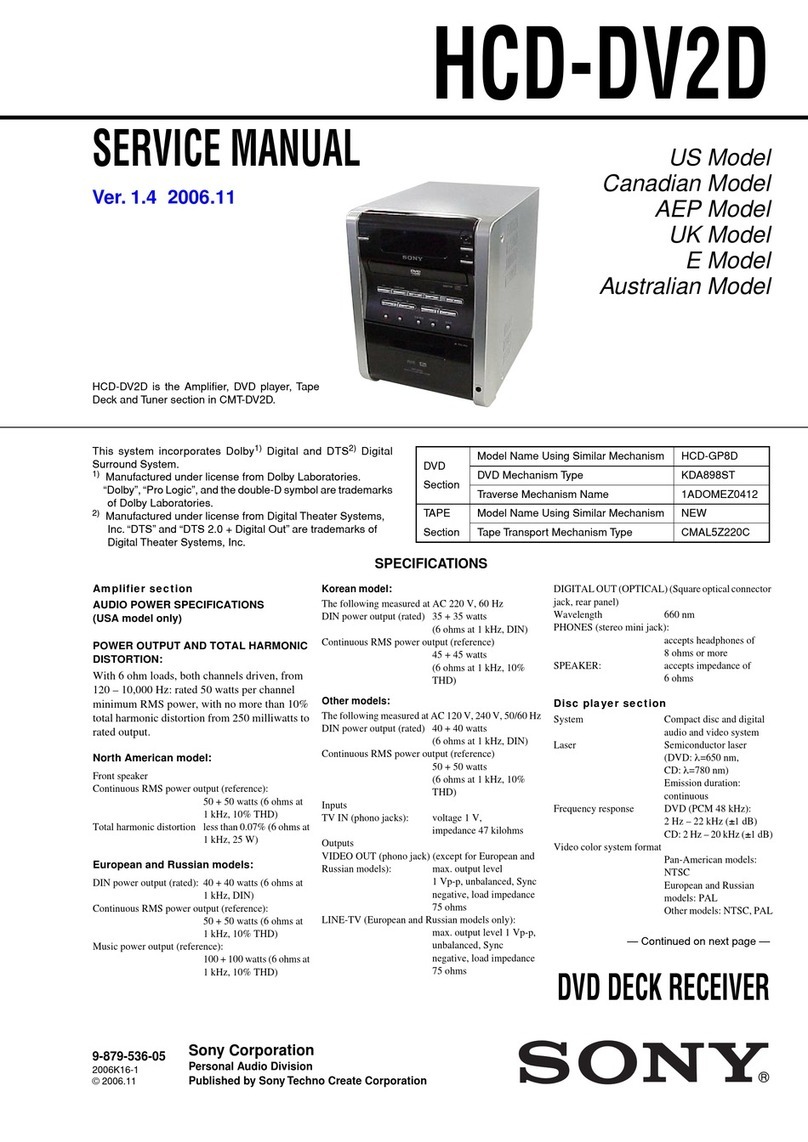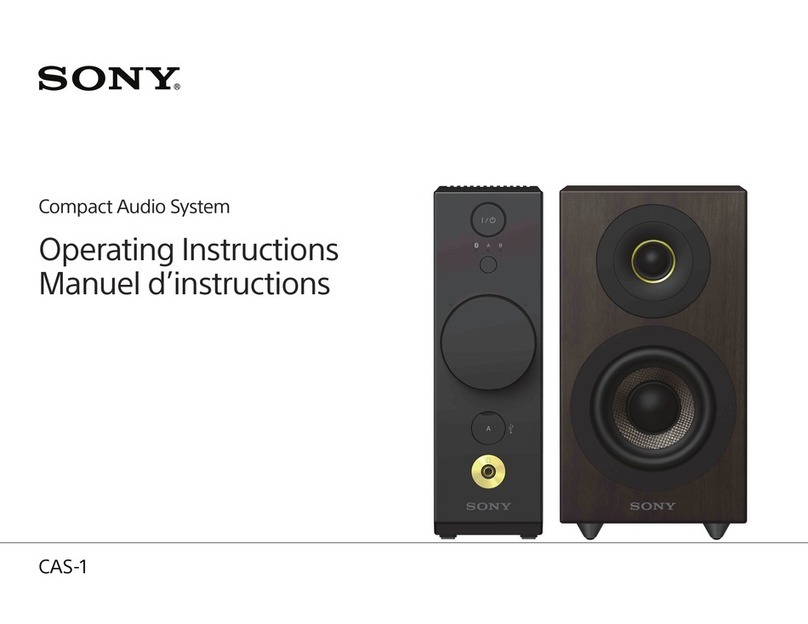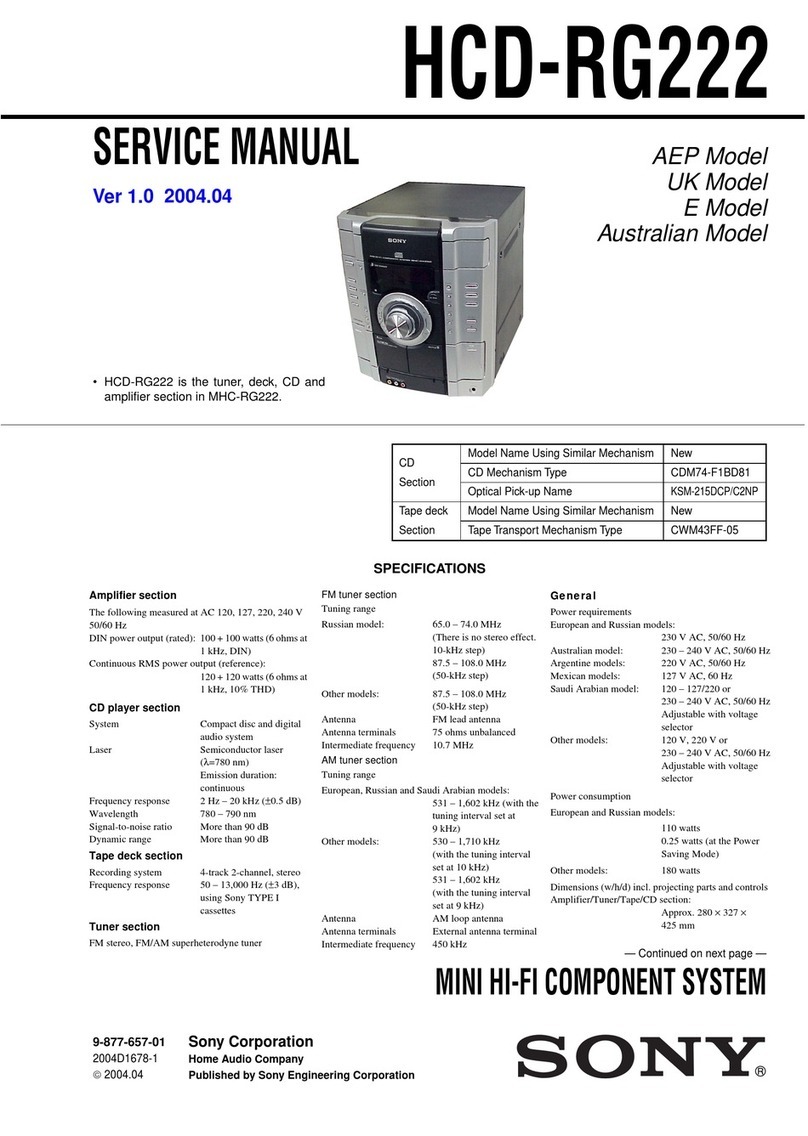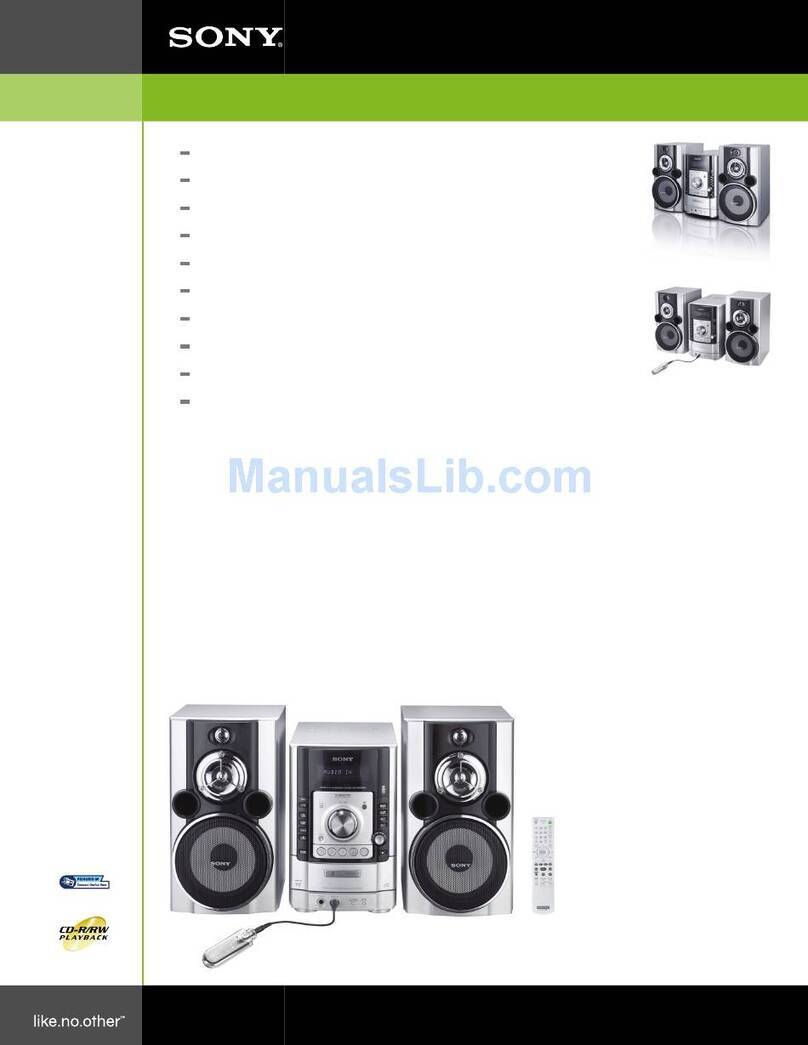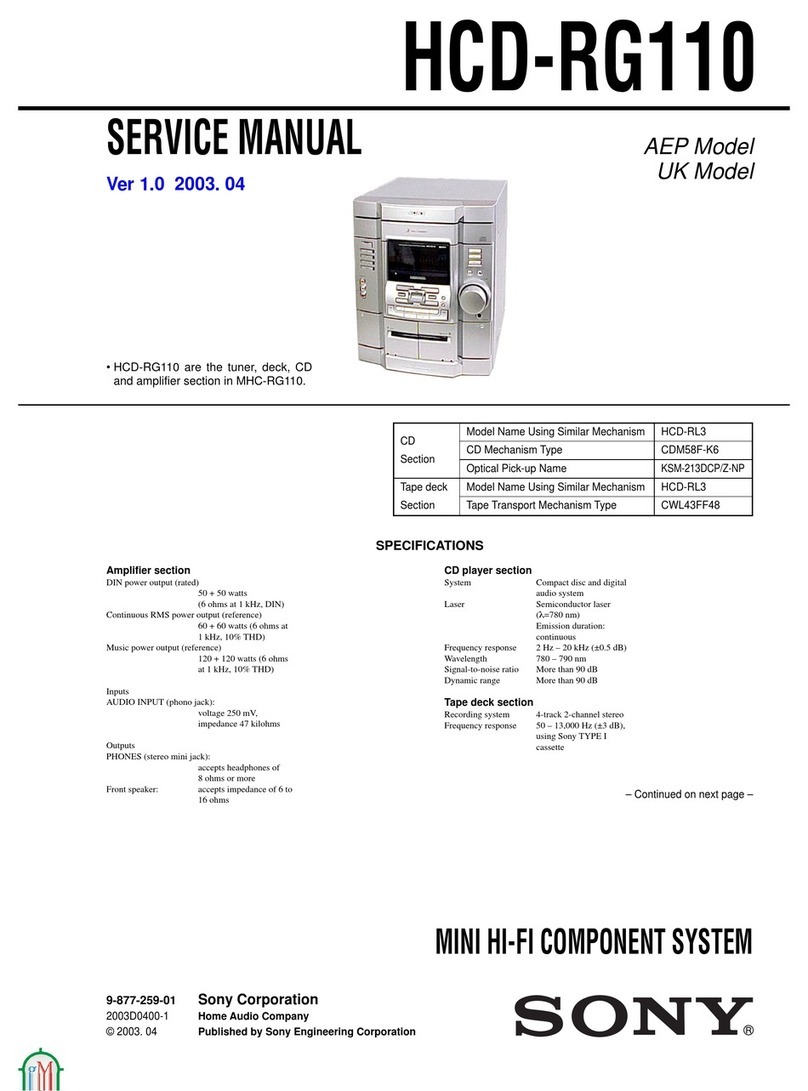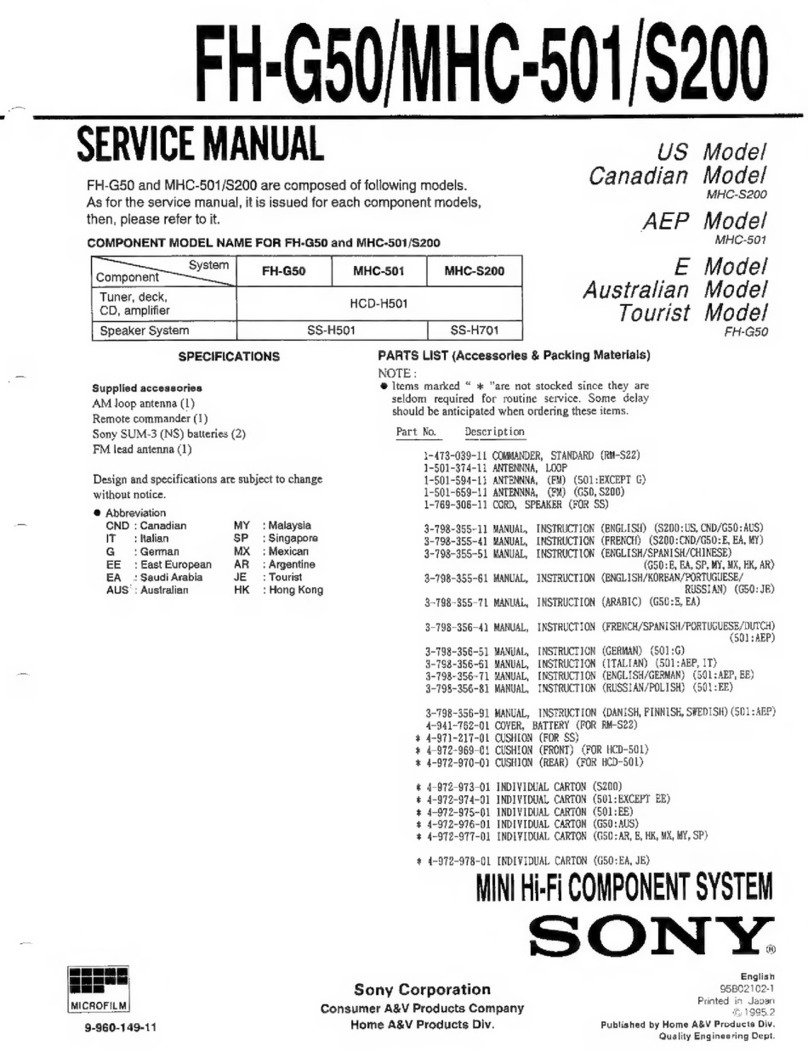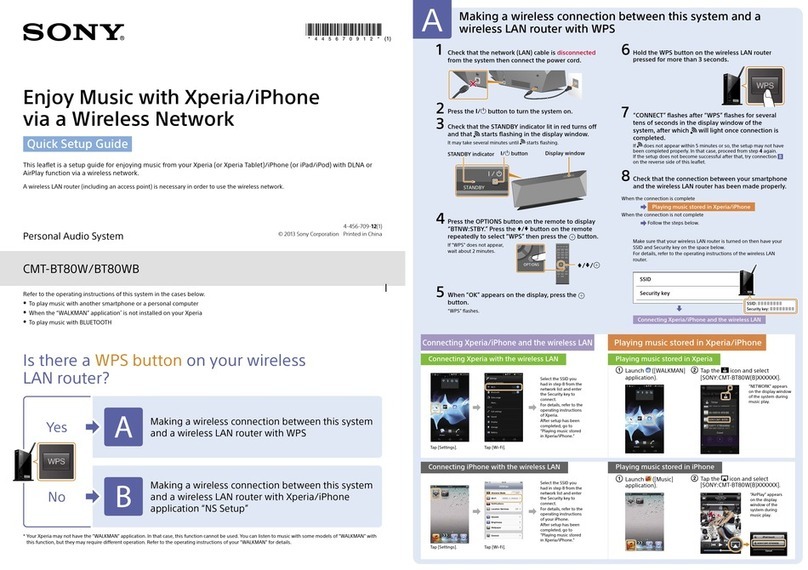4
7. EXPLODEDVIEWS
7-1. Case and Back Panel Section .............................................. 53
7-2. Front Panel Section 1 .......................................................... 54
7-3. Front Panel Section 2 .......................................................... 55
7-4. Chassis Section ................................................................... 56
7-5. TC Mechanism Section 1 (TCM230PWR1)....................... 57
7-6. TC Mechanism Section 2 (TCM230PWR1)....................... 58
7-7. CD Mechanism Section (CDM37M-5BD32L)................... 59
7-8. Base Unit Section (BU-5BD32L) ....................................... 60
8. ELECTRICAL PARTS LIST ........................................ 61
1. SERVICING NOTE .......................................................... 5
2. GENERAL ....................................................................9
3. DISASSEMBLY
3-1. Front Panel .......................................................................... 11
3-2. Main Board ......................................................................... 11
3-3. Sub Panel ............................................................................ 12
3-4. CD LID Assembly .............................................................. 12
3-5. Tape Mechanism Deck and Cassette LID ........................... 12
3-6. CD Mechanism Deck .......................................................... 13
3-7. Base Unit............................................................................. 13
3-8. Disc Table ........................................................................... 13
4. MECHANICAL ADJUSTMENTS ..........................14
5. ELECTRICAL ADJUSTMENTS ............................... 14
6. DIAGRAMS
6-1. Circuit Boards Location ...................................................... 17
6-2. Block Diagrams
• BD (CD) Section.............................................................. 18
• Deck Section .................................................................... 19
• Main (1/2) Section ........................................................... 20
• Main (2/2) Section ........................................................... 21
• Power Section (LX8 model) ............................................ 22
• Power Section (LX7 model) ............................................ 23
• Display Section ................................................................ 24
6-3. Printed Wiring Board – BD (CD) Section – ....................... 26
6-4. Schematic Diagram – BD (CD) Section – .......................... 27
6-5. Printed Wiring Board – Main Section – .............................. 28
6-6. Schematic Diagram – Main (1/3) Section – ........................ 29
6-7. Schematic Diagram – Main (2/3) Section – ........................ 30
6-8. Schematic Diagram – Main (3/3) Section – ........................ 31
6-9. Schematic Diagram – Deck Section –................................. 32
6-10. Printed Wiring Board – Deck Section – ........................... 33
6-11. Schematic Diagram – Power Section – ............................ 34
6-12. Printed Wiring Board – Power Section – ......................... 35
6-13. Schematic Diagram – Panel FL Section – ........................ 36
6-14. Printed Wiring Board – Panel FL Section – ..................... 37
6-15. Schematic Diagram – Panel VR Section – ....................... 38
6-16. Printed Wiring Board – Panel VR Section – .................... 39
6-17. Schematic Diagram – TC Panel Section – ....................... 40
6-18. Printed Wiring Board – TC Panel Section –..................... 41
6-19. Schematic Diagram – CD Panel Section – .......................42
6-20. Printed Wiring Board – CD Panel Section – .................... 43
6-21. Schematic Diagram – CD Motor Section – ...................... 44
6-22. Printed Wiring Board – CD Motor Section – ................... 45
6-23. Schematic Diagram – Trans Section – (LX7 model) ....... 46
6-24. Printed Wiring Board – Trans Section – (LX7 model)..... 47
6-25. Schematic Diagram – Trans Section – (LX8 model) ....... 48
6-26. Printed Wiring Board – Trans Section – (LX8 model)..... 49
6-27. Schematic Diagram – Leaf SW Section – ........................ 49
6-28. Printed Wiring Board – Leaf SW Section – ..................... 49
6-29. IC Block Diagrams ........................................................... 50
6-30. IC Pin Functions ............................................................... 50
TABLE OF CONTENTS
